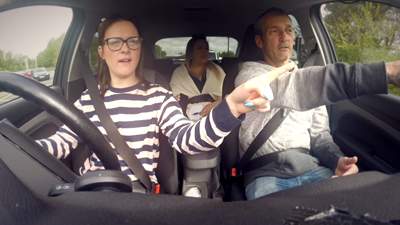
Car crime is on the rise, after declining for more than two decades. Vehicle theft shot up by 57% to 89,000 in 2017 as organised criminals use increasingly sophisticated methods to hack electronic systems in cars.
90s crime wave
“The early 90s was the peak of vehicle crime,” explains Richard Billyeald, chief technical officer at Thatcham Research, which tests vehicles for safety. “It was the days of joy riding, hot-wiring cars and cars on bricks with wheels missing.” he says.
In 1992, a year in which there were 620,000 car thefts in the UK, a new standard for car security was introduced, the New Vehicle Security Assessment (NVSA), which ushered in measures including alarms and double-locking door functions. Richard says these changes, as well as the 1998 requirement for immobilisers to be fitted as standard in all new cars helped “prevent relatively simple attacks that any old scallywag could do,” and theft levels dropped by 80% up to 2016.
Rise of the electronic thief
But digitally-savvy criminals are now using more sophisticated methods to bypass modern security systems and attempt to outsmart car manufacturers.
This crime is often the work of criminal gangs, Richard says: “You still get kids breaking windows, but most theft is to drive the black market in car parts.”
One common method used by criminals is to hide a ‘jamming’ device to interrupt signals from key fobs and prevent cars from locking. Unknown to the victim, who probably believes they have locked their car, the thief can then snatch their belongings or steal the vehicle itself. This type of crime is particularly prevalent at motorway service stations, Richard warns.
Another increasingly common method is the ‘OBD hack’, in which criminals use a cheap tool to fool a car’s onboard security systems and download the car’s electronic information onto a blank key. They can then drive the car away.
Some modern cars enable keyless entry, which is being taken advantage of by thieves. They work in pairs to carry out so-called ‘relay attacks’. This is when one criminal has a device which receives the car key signal from inside the victim’s home. This signal is transferred to a second device, which is placed next to the target car, enabling the thieves to quickly unlock the vehicle and drive away.
How to keep your car safe
The police, government and car manufacturers are all attempting to get to grips with the rising tide of car crime. And Thatcham Research is set to update the NVSA programme to help secure cars against the growing threat presented by digital compromise.
In the meantime, here are some tips to help keep your car safe:
- Aim to park your car in well-lit and well-populated areas, or in car parks with security features such as CCTV, manned barriers or gated entry.
- Don’t leave valuables on display in your vehicle, as this can attract opportunist thieves.
- Check that your vehicle has actually locked after pressing your key fob. Listen for the locking noise, watch for the lights to flash or the mirrors to fold. Or to be sure, pull the door handle after locking your car.
- Check your car windows are closed, even if you are only leaving it for a few minutes.
- Think about where you leave your spare key. Don’t leave it in your vehicle. Know how many spares you have and where they are kept.
- At home, keep your keys well away from the door or windows and out of sight. Storing electronic key entry systems in a tin container can prevent relay attacks.
- Check that your alarm or immobiliser is enabled when you leave your car, by checking for the flashing light on your dashboard. If you don’t have an immobiliser, consider buying an alarm, steering wheel lock or other locking device.
- If you need to leave your car keys with somebody, perhaps a valet or mechanic, check they are legitimate by using websites such as The Motor Ombudsman for garages, the Park Mark scheme for low crime car parks, or the WashMark initiative for accredited car wash sites.
- It may seem boring but read your car’s manual to understand its security features. For example, if you have a keyless entry system, and it can be turned off overnight, then be sure to do so.
